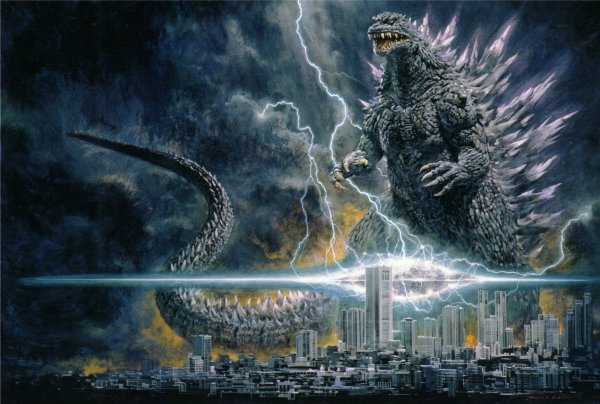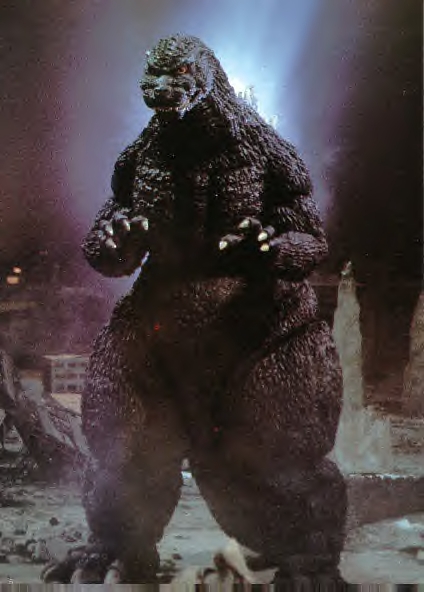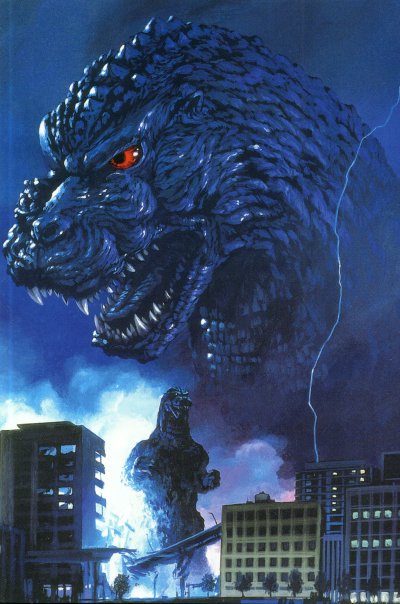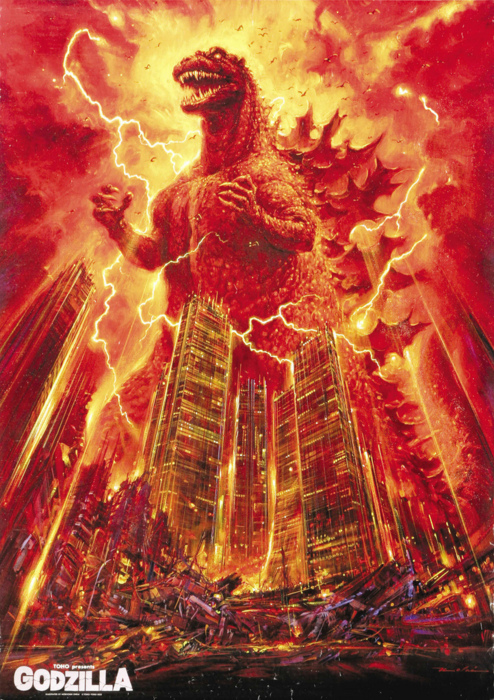Godzilla (2014) Is a True Godzilla Film and a Unique Blockbuster
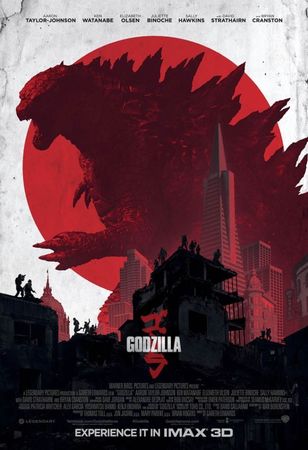 New to Godzilla? Read my 5-part history series.
New to Godzilla? Read my 5-part history series.
To all of those who saw the new Godzilla this last weekend who have never before fully understood the obsession fans have for this monster … now you will get it. Welcome to our weird world!
Godzilla isn’t just a massive monster that stomps stuff, confronts the military, and grapples with other monsters. Any giant beast can do that without much thought put into it. Godzilla is a character and a legacy. Even when playing the straight-up villain in films like 1964’s Mothra vs. Godzilla, the Big G is beyond larger than life and something you cannot help but gape at in awe and then salute. What a piece of work is a giant radioactive reptile! In apprehension how like a god(zilla)!
Director Gareth Edwards’s 2014 take on Godzilla, only the second film from a U.S. studio featuring the monster (or, if you ask most fans, the first), is a genuine Godzilla movie. Edwards’s creature isn’t the greatest incarnation to grace the silver screen, something I’m sure he would admit, as nothing could re-capture the cultural magic and hands-on effects work of director Ishiro Honda and special effects creator Eiji Tsubaraya from the classic series. But the Edwards Godzilla is a legitimate and superb version that achieves the gravity of the 1954 orignal Godzilla and the thrilling monster-vs.-monster mayhem of the films that followed it through three eras and six decades. For Godzilla fans, this movie contains the sheer ecstasy of a dream realized that brings spontaneous cheers, gasps of admiration, and watery-eyed moments of recognition. I could not imagine a better way to craft a U.S.-made Godzilla film, and it is to the immense credit of Edwards and everyone involved that, until now, I could not have foreseen how such a feat was even possible.
Even for those with scant knowledge of the great monster except what comes from the pop culture mill, Godzilla ‘14 is as an unusual Hollywood blockbuster. Gareth Edwards and Co. crafted a movie that stands apart from the stateside summer thrill machines as much as the Japanese films of 1960s did from their U.S. counterparts. Godzilla plays at the slow build, purposely restraining the sprawling spectacle until unleashing the finale. During the first two thirds, the suspense centers around scenes where the monsters remain glimpsed, their masses emphasized to drive the action without making them the centerpieces. Godzilla doesn’t receive a full reveal until an hour in, and the movie immediately leaps away after the unveiling. Instead of signaling the opening of the mayhem, the moment switches into the next step of the gradual climb to the plateau. Where many blockbusters pummel audiences with as much noise and pixels as they can afford until viewers feel only numbness for the finale, Godzilla wants to make them breathless in anticipation for the climax so that when it arrives, it means something.
